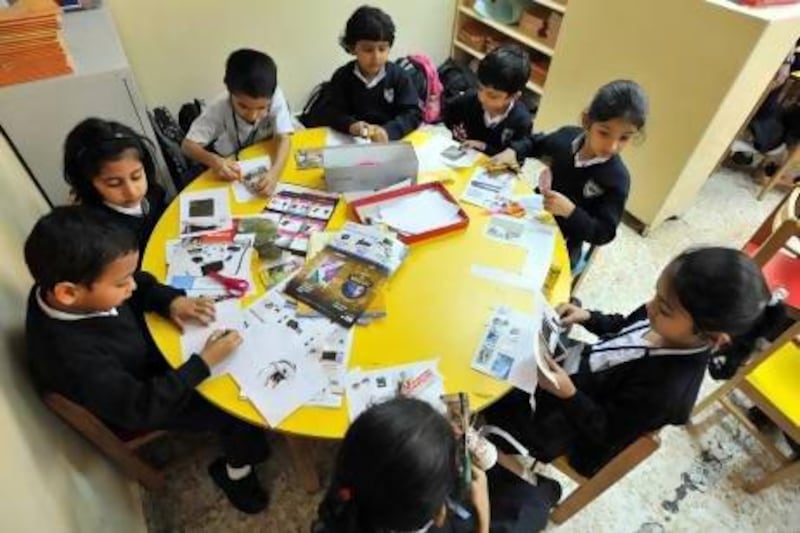DUBAI // The standard of education offered at Asian schools in Dubai has remained static despite four years of a rigorous inspection regime.
Two Indian schools with a total of more than 8,000 pupils have improved their rating from Good to Outstanding since inspections began in 2009, and a further two have improved from Acceptable to Good.
But their improvement is offset by a slump in standards at another two Indian schools, which have fallen from Acceptable to Unsatisfactory, doubling to more than 4,000 the number of pupils whose education is deemed inadequate.
Overall, the number of children receiving a Good or Acceptable education at Asian schools has risen from just more than 52,000 in 2009 to just more than 54,000, broadly in line with the total increase in the number of pupils.
Of the 23 Indian schools inspected by the Dubai School Inspection Bureau this year, two were rated Outstanding, seven Good, 12 Acceptable and two Unsatisfactory.
Of the three Pakistani schools in Dubai, two were found to be Unsatisfactory and the other Acceptable.
Indian curriculum schools educate more than 60,000 pupils in Dubai, and Pakistani schools 2,993.
Inspectors found pupils were likely to have a positive attitude to learning and display good behaviour.
“Most, but not all, schools provide regular and effective opportunities for students to develop as leaders,” their report said. “Respect for heritage and culture along with a positive work ethic and a strong sense of responsibility are evident strengths.”
Overall, two-thirds of schools scored high marks for this feature.
However, the Knowledge and Human Development Authority, which sanctions the bureau to carry out the inspections, sounded alarm bells over the year-on-year increase in the number of children attending Indian schools ranked as Unsatisfactory.
In the 2009-2010 academic year, only 2,277 children were enrolled at the lowest ranked schools compared with this year’s 4,121 pupils.
Inspectors said lacklustre leadership, quality of teaching and insufficient support and care for pupils were the main areas needing improvement.
About half of all schools were found to have weak leadership.
“A school’s quality cannot supersede that of its leadership,” said Dr Abdulla Al Karam, director general of the KHDA.
School leaders needed to put in more effort to bring about change and collaborate with other schools to share solutions, he said.
“We cannot have an outstanding school with poor leadership.”
Sindu Samed, senior school supervisor of the New Indian Model School, which has repeatedly received an Acceptable rating, said the biggest obstacle was high teacher turnover.
“It is disappointing to be in this situation,” she said. “The school invests in a lot of teacher training but then teachers leave and we are back to square one.”
The inspection report highlighted just that problem, saying the number of unsatisfactory lessons had increased over the years.
"Teachers in Indian schools do not consistently demonstrate a confident grasp of best international practice," the report said.
Jameela Al Muhairi, the inspection bureau chief, said: "The quality of teaching in kindergarten was unfortunately the weakest."
The final factor standing in the way of improvement, inspectors said, was school leaders’ inflated view of the performance of their staff.
“Only a small number of schools evaluate themselves accurately,” said Ms Al Muhairi. “Acceptable schools rated themselves as outstanding. If they do not evaluate themselves accurately, they will fail. I am not talking about swimming pools or fancy websites for improvement. This will not lead to high-quality teaching.”
aahmed@thenational.ae






